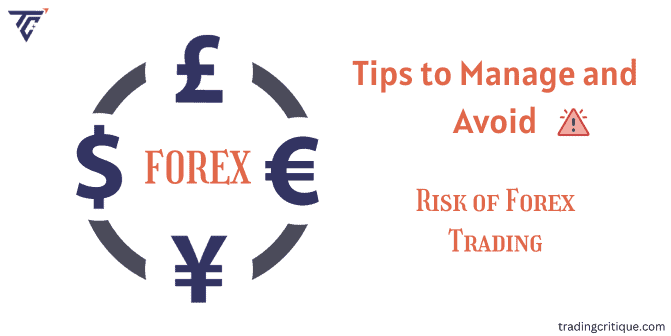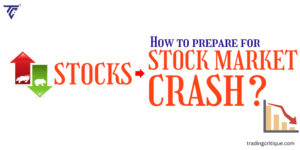
How to Make Money with Bitcoin Guide for Beginners
I think right now you are earning money by selling Bitcoin, but you don’t know that you can earn money in different ways. Do you want to know what those ways are? Let’s see below in this article.
Back To Top
The Forex market’s volatility offers a plethora of profit-making opportunities, but it also entails significant risk for traders. Find out how to manage the forex risk management involved in forex trading by learning about them.

There are four types of forex risk management:
The risk connected with fluctuations in the prices at which you can purchase or sell currencies or currency pairs is known as exchange rate risk. Although shares and commodities can also expose you indirectly, exposure to forex markets increases this risk.
Interest rate risk is the danger connected to an abrupt change in interest rates, which has an impact on volatility. Interest rate movements have an impact on foreign exchange rates because they can cause spending and investment levels to rise or fall across an economy.
Liquidity risk is the possibility that you won’t be able to buy or sell an asset quickly enough to prevent a loss. Although the forex market is typically quite liquid, there may be times when it is not, depending on the currency pair and the laws governing it.
The possibility of amplified losses when trading on margin is known as leverage risk. Verify the amount of capital you are risking because the initial investment is less than the Forex trade’s value.
Forex trades are extremely risky even though they can only be made in percentages of a single point. Since it takes a lot of money to make a currency pair to sizable profit in forex, a lot of traders use a lot of leverage. Although it is hoped that their leverage will generate profits, leveraged positions typically result in exponentially higher losses.
Forex trading plan has the potential to be profitable, but timeframes need to be considered. Short-term profitability, expressed in terms of days or weeks, is simple to achieve.
But, having a lot of money as an account balance to leverage and a forex risk management system in place usually makes it much easier to be profitable over several years. Forex market is not something that many retail traders stick with for longer than a few months or years.
Forex risk management is the process of putting in place a system of guidelines and controls to make sure that any unfavorable effects of a trade can be controlled.
An effective strategy necessitates meticulous planning from the outset to the end since it is not a good idea to start trading and then attempt to manage your risk as you go.
Here’s how to calculate forex risk management, step-by-step:
Determine the highest allowable loss that will not interfere with your financial goals. For example, your risk capital would be $500 if your savings are $10,000 and you feel comfortable taking on 5% of the risk.
Your stop loss level, your risk capital, and the percentage of each trade that you are willing to risk will all play a role in determining the size of your position.
For instance, with $500 risk capital and 2% risk per trade, your position size might be $0.50 per pip if your stop loss is 20 pip absent.
Accuracy is essential for establishing effective stop losses. Setting your stop loss level 20 pip away from your entry price is essential if your position size is $0.50 per pip movement and your trade risk tolerance is $10.
The profit target for every trade can be determined by examining the support and resistance levels shown on the chart. For example, if there are 50 pip values between the resistance level and the desired profit is $50, then each pip is worth $1.
By dividing the intended profit by the stop loss level, one can calculate the risk reward ratio. This ratio weighs the potential gain against the potential loss. In this scenario, with a $50 profit target and a $10 stop loss, the risk-reward ratio would be 5:1.
Make a detailed trading plan by utilizing the determined parameters. Entry and exit points, position size, stop loss, and profit targets should all be included in this plan. Of course! Following a trading plan encourages self-control and lessens the possibility of making emotional decisions.
The following are a few of the most widely used techniques in forex risk management:
Before opening a position, it is crucial to determine the entry and exit points of your trade due to the extreme volatility of the forex market. Several stop loss and limits can be used for this.
If the market moves against you, stop orders will immediately close your position. That doesn’t mean it won’t slip, though.
Limit orders will close your position when the price movements reach your predetermined level and the currency pair will follow your profit target in the forex market.
In simple terms, Forex risk management strategies are key for anyone trading in the Forex market. These strategies help manage potential losses. A big part of this is setting a stop loss, which limits how much you can lose on a trade.
Also, it’s important to decide the right position size for each trade to reduce potential losses. While these methods can’t remove all risks, they are essential in managing the challenges presented by the Forex market and decisions made by central banks that can affect currency values.
With the help of our reliable, regulated forex broker platform, improve your trading! Keep abreast on stocks, CFDs, cryptocurrencies, and forex.
To protect trader’s investments from possible losses, preserve capital, and eventually increase the profitability of trading strategies, forex risk management is essential in forex trading.
Divide the potential profit from a trade by the potential loss to find the risk-to-reward ratio. This evaluation guarantees compliance with risk management strategies objectives and assists traders in determining the possible profitability of a trade.
Ignoring market volatility, failing to diversify portfolios, overleveraging positions, and ignoring stop loss orders are common errors made in risk management strategies.
The ideal position size depends on variables such as account size, volatility in the market, and risk tolerance. To determine the optimal position size for risk management, traders can utilize position sizing calculators or formulas.
In forex trading, risk cannot be eliminated. Effective risk management techniques, however, can considerably lessen the impact of unfavorable market fluctuations and safeguard traders’ capital.


I think right now you are earning money by selling Bitcoin, but you don’t know that you can earn money in different ways. Do you want to know what those ways are? Let’s see below in this article.

Long-term investment is a good option for those looking to invest their savings or income in a solid project. So, first you need to know about what the long-term investments are and how to pick the best one with your future goals. Stay with us to know about it.

Stock trading involves buying and selling company shares to make a profit, and it can be risky, especially if you lack basic stock market knowledge, research skills, and analytical thinking.

What is a mutual fund? A mutual fund is an investment pool that a qualified fund manager oversees. This is a trustworthy place to invest in stocks, bonds and other securities. You will be investing with a group of people who share the same investment goals.

Investing for the long term can give you more profit by investing in good timing. The stock market’s ups and downs are a normal part of investing, but a crash can be scary. Learn how to protect yourself from a stock market crash and protect your investments.

What does staking crypto mean? Staking is like putting your crypto assets on hold for a while to support a blockchain’s operations. In exchange for crypto staking, you get more crypto in return. Let’s discuss how staking works, and benefits, and explain how you can earn passive income by staking.
